The Birth Ball for Comfort in Pregnancy and Postpartum
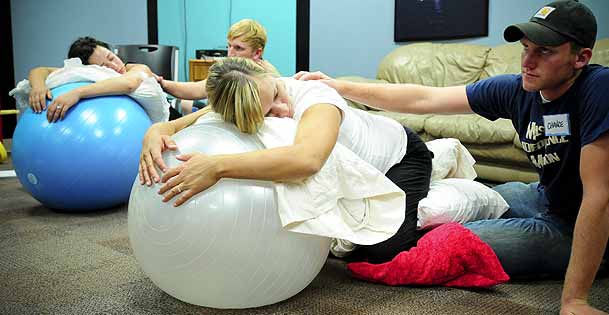
If you’ve never been pregnant before, you might think of this round thing above as an exercise ball. I first heard it called the ‘Swiss Ball’ (which is odd because it is an Italian creation) and began using them in my massage therapy practice in 1990. That burst-resistant ball, created in 1963, was intended for use in gymnastics but was adopted by European physical therapists to help children who struggled with proprioception or balance issues.
When it came to the US in the 80’s it was quickly incorporated into the fitness industry. Birth Pioneer, Penny Simkin, a former physical therapist herself, is credited with bringing the ball into the birth room in the early 90s, prompting birth professionals and labor and delivery staff to call a “birth ball.” Simkin, the author of The Birth Partner and Pregnancy Childbirth and Newborn , is one of the founders of DONA International, the largest and longest-standing organizations that trains birth and postpartum doulas which is another reason the ball is so widely used now in birth…nearly every doula has one!
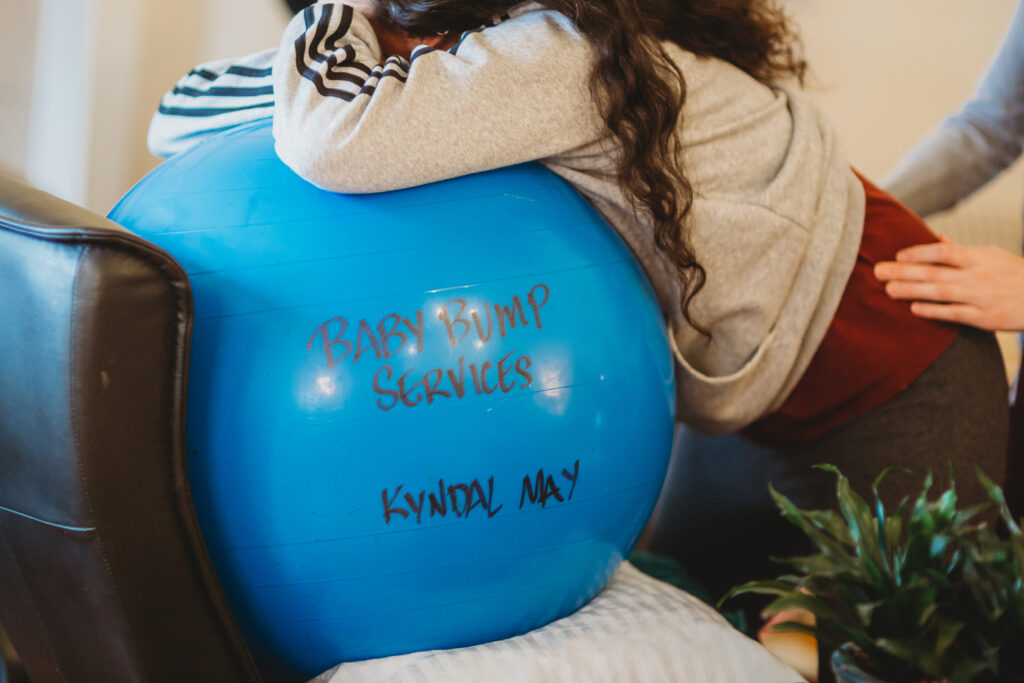
If you’re pregnant, sit on one and you’ll likely discover that the birth ball
is the most comfortable seat you can find.
What is it about this simple ball that makes it such a great option for comfort and support?
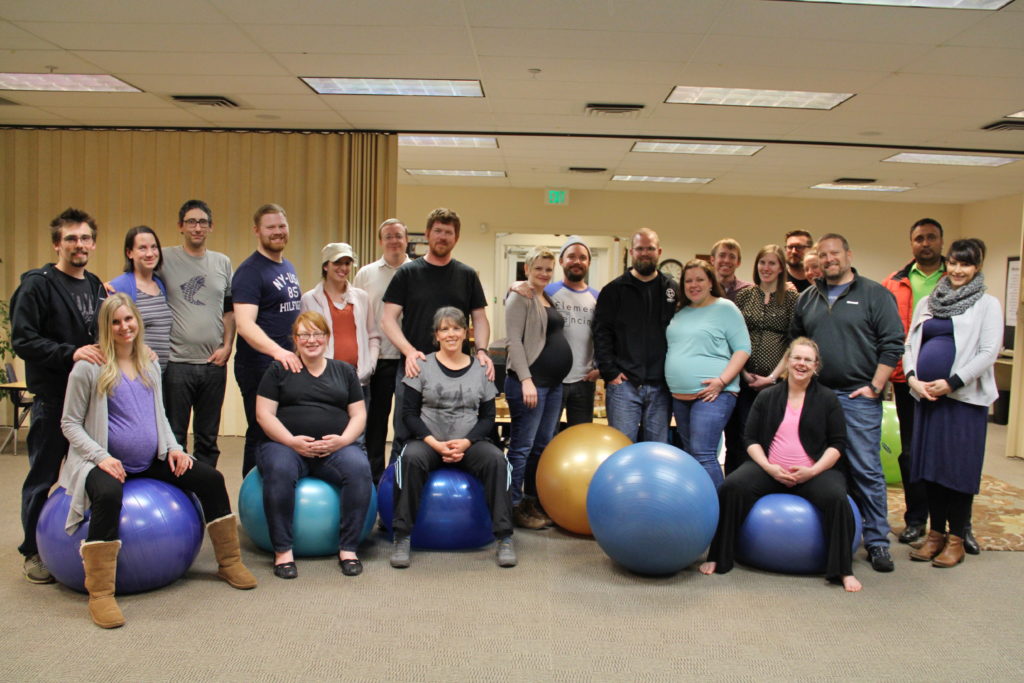
First, unlike hard chairs that hurt our backs and hips, and soft furniture that we struggle to get out of – the shape and flexibility of the birth ball eases the discomforts of sitting and also makes getting up easy. You can see from one of the Confident Birthing Classes above, parents love their birth balls!

Second, it supports the pelvis in a way that encourages optimal fetal positioning by keeping your hips above or higher than your knees. That is, IF you have the right fit (size and volume of air in your birth ball!) We’ll come back to that later.
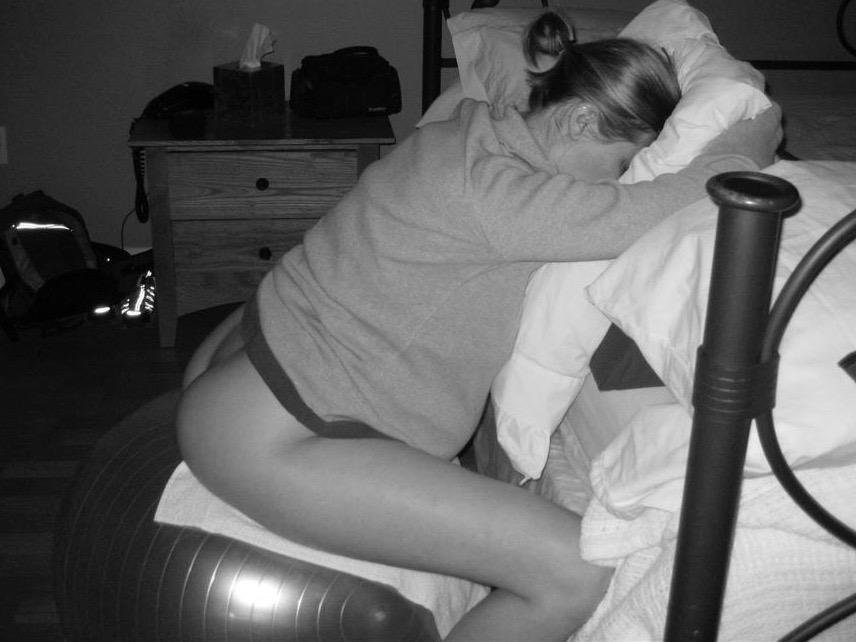
![]()
Third, because it is a dynamic tool – it moves when you move, it helps laboring moms move their bodies during labor and one thing we know for sure: rhythm is the common denominator among laboring folx who are coping well. My personal mantra is MOVE HIPS, MAKE SOUND.
But don’t think this ball is just for sitting… there are many more ways we use the birth ball in pregnancy, labor and the postpartum period. It really can become the go-to tool for expectant, laboring and postpartum parents.
For example, the birth ball is a perfect substitute for someone to lean on when you need it.
You can lift it onto a bed, a chair, even a table and feel well supported to rest your upper body.

It allows you to move in many directions finding a rhythm that helps you focus and breathe through your contraction.
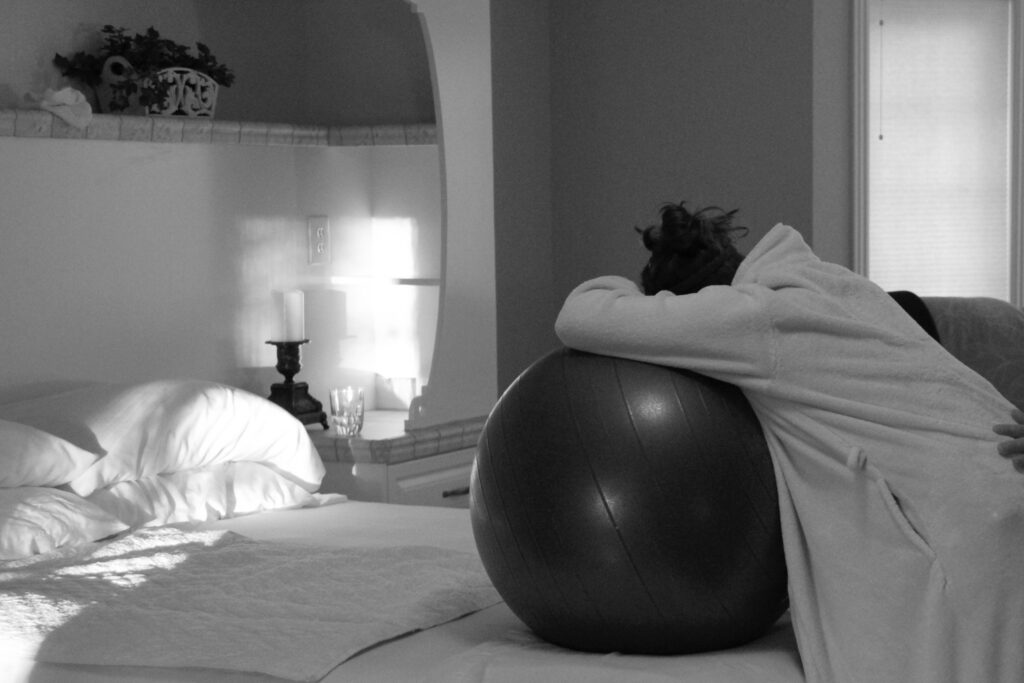
It encourages progress in labor by helping you stay gravity-bearing
while feeling supported enough to rest between contractions.
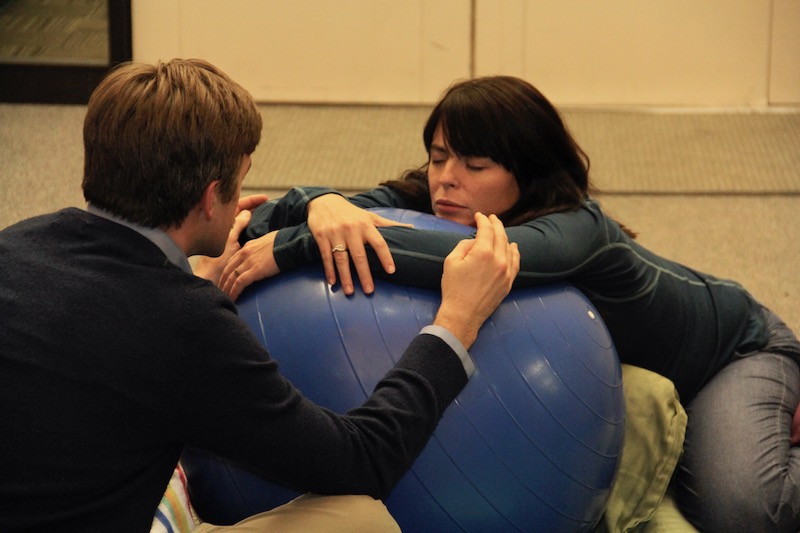
And there are other ways to use the ball that are just as helpful
– like supporting your arms over the edge of a birth tub.
(This is an old-school tub – most birth tubs now are inflatable and have large, soft sides to support your arms but you could use the birth ball this way with a large tub in a home or hospital.)

You can use your well-inflated (read: firm) birth ball to provide counter pressure to your back
if no one is there to do it.
Make sure the very middle (widest diameter) of the ball is right at the place you want pressure –
most often right at your low-back or at the top of your sacrum
your S-I (Sacroiliac) Joint.
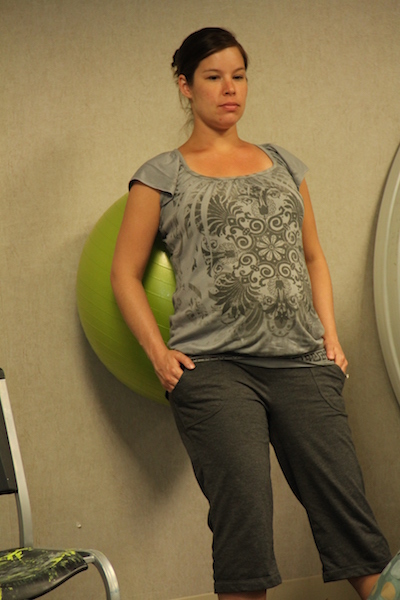
If you don’t know where your SI Joint is, look at the arrows below.
Lots of folks have “dimples” on their low back right there.
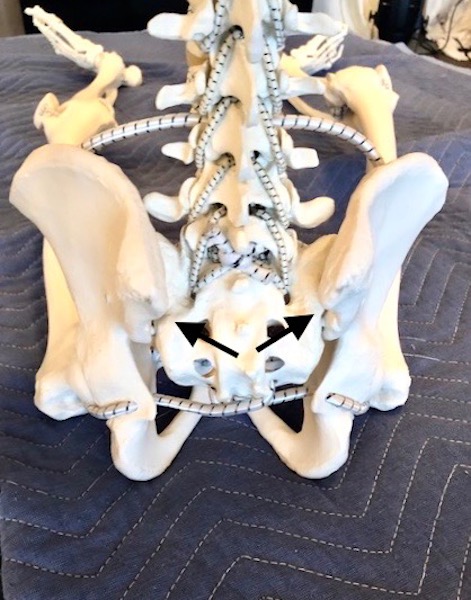
And finally, I always tell dads and non-lactating partners…
you can soothe your baby with a birth ball!
If you are like the dads I hear from, this will be the “tool” that saves you
when baby needs soothing and usually only nursing will work.
Non-lactating/bottle feeding parents need another option!
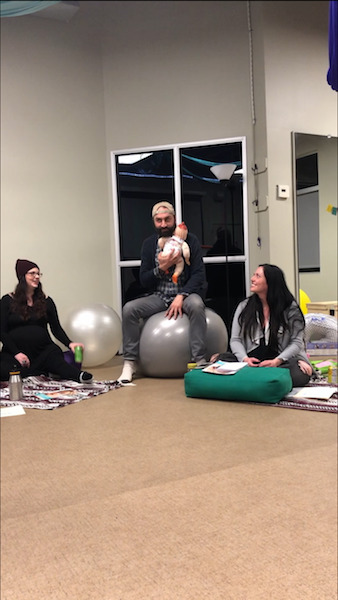
For another great way partners can use the birth ball to help moms labor on the toilet check out Laboring on the Loo
My hope is that this post will help you see you can use the birth ball before, during and after the birth.
All right, so if you believe it’s worth the investment, let’s talk size and fit for a moment.
It is absolutely not one-size-fits-all.
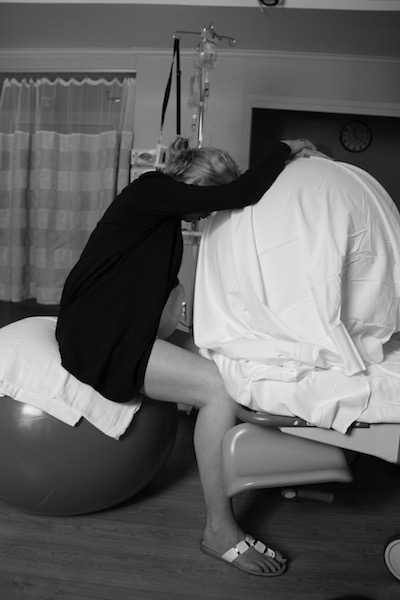
The most common size for the average person is 65cm.
A proper fitting physio ball is one that, when you ARE NOT PREGNANT and you sit on it,
your knees and hips are level (in the same plane)
which allows for a 90-degree angle of your knees to the floor.
See the photo below which I will reference again in just a moment.
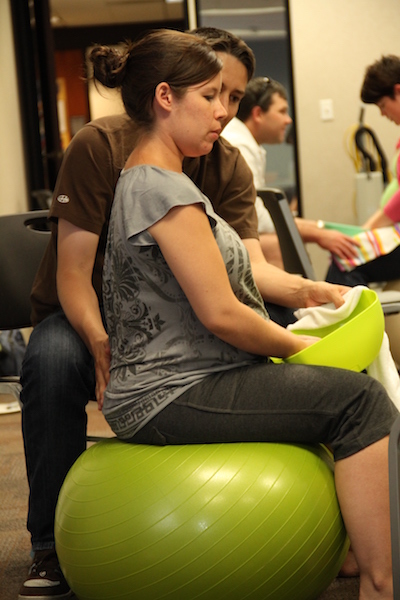
In pregnancy and birth, proper fit on a birth ball is a size and inflation volume
that supports the need for your hips to be higher than your knees.
Below you see a very good fit – this mom’s hips are clearly higher than her knees
AND she feels stable on the ball.
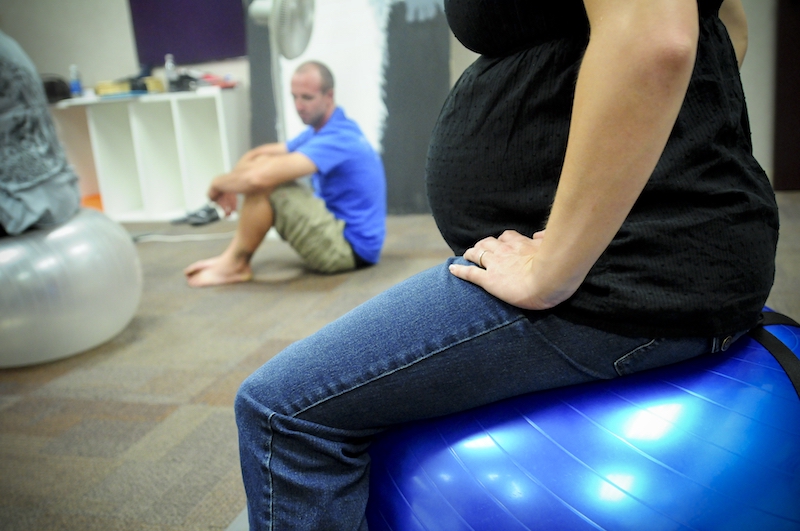
With regard to size – you are going to see different and opposing information depending where you look.
I believe the discrepancies are because they aren’t considering ratio of legs to torso. Here is what I have seen over the past 25 years as a doula and childbirth educator:
If you are between 5’2(ish) and 5″10(ish), most often a 65cm ball is going to fit you. I say ‘ish’ because you might be long-legged or long-waisted and that makes a difference. If you are under 5’2 then a 55cm ball is likely going to be better and if you are 5’11 or taller, you’ll probably need a 75cm ball.
But there is another factor in play which is the volume of air in the ball and the material used to make the ball.
So, for example, in the photo below we can get this ball to fit the mom better by simply adding more air. And, as long as she still feels stable, that would work.

In the photo below this mom’s hips are just a little higher than her knees but her ball is inflated well and she is most comfortable on it this way –
meaning it feels stable to her at this angle/volume of air. Going up on size or increasing the volume of air probably won’t work.
If absolutely necessary, (meaning the parent values the best fit possible)I would see if another brand of ball – that was properly inflated –
might bring a little more lift to her hips. If not, this fit is better than the one above.
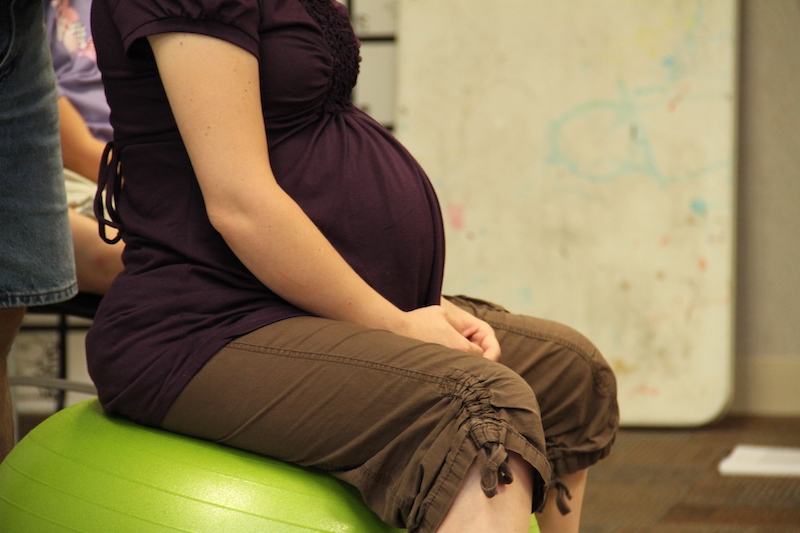
Below the fit of this yellow ball is questionable. My guess is it would not fit the mom leaning over it if she was to sit on it.
And I don’t think she can add more air to it (more on that later.)
The blue or white balls in the background are likely a better choice as it would give her the support she needs while increasing the gravity-bearing angle of her torso.
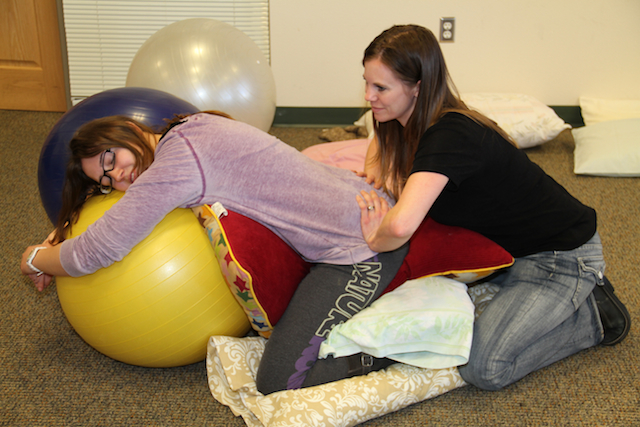
There is no uniformity of color and size from brand to brand or in the material they use, but I will share what I’ve noticed over the past 30 years:
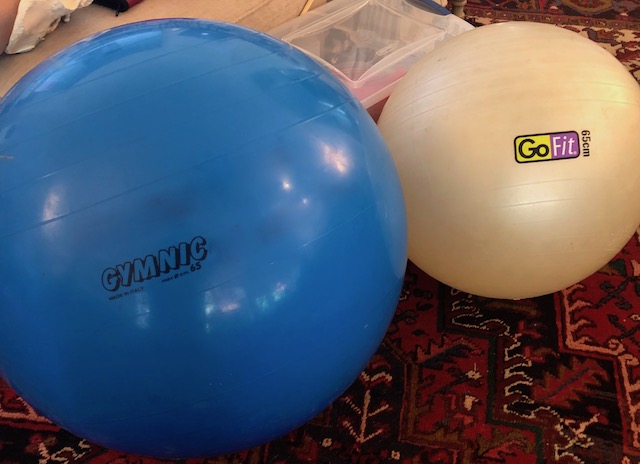
Most balls are made of a soft, flexible form of PVC. Some are made of rubber.
Regardless of brand, the more porous-looking the material is, the more it seems
to release air more quickly over less time
AND the more air you often need to put in it to get the firmness needed
to lift your hips above the knees.
The shinier and smoother the material – the longer it seems to hold proper air volume.
So, the yellow ball above likely won’t take more air based on what I can see
and remember from this doula training.
There is a one style of ball (that looks like the one in this link) that is somewhere in-between in terms of matte finish/texture and that style of ball – with that kind of seaming – is the one I most often notice gets over-inflated and has very little flexibility.
So let’s talk about inflating your birth ball.
DO NOT INFLATE IT 100% the first time! Most instructions don’t say this.
The first time you inflate it – only fill it about 75-80% and let it sit over night.
Then fill it the rest of the way the next day. This seems to allow the ball to fill completely to
the size it is intended to be. Otherwise, if you fill it completely the first time you inflate it, your 65 cm ball may only inflate to about 55cm.
When completely full, it should feel firm when you press it on it but have a little ‘give.’
If you inflated your ball all the way the first time,
and it seems smaller than it should be, don’t fret.
Most will continue to expand over time so place the birth ball in a warm space
(in a window with sunshine or in your warm car during the spring or summer or in a bathroom during a hot shower) and let it warm up, then add more air.
Finally, it is important to make sure the ball is burst-resistant to a certain weight.
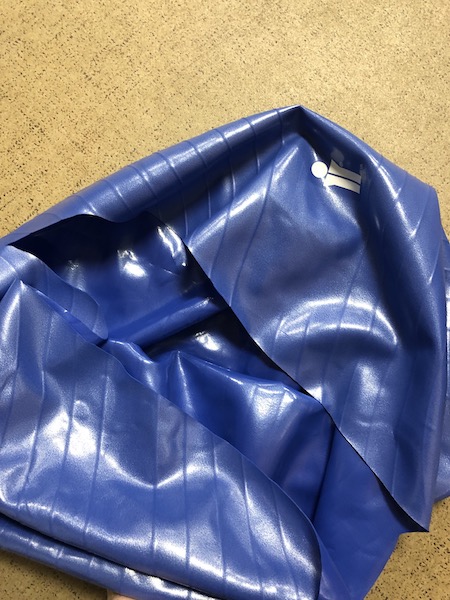
Burst resistant means it should not pop when you sit on it – up to a weight limit
– it does NOT mean it can withstand shish-kebob skewers, puppy teeth (client experiences)
or my personal experience of getting the ball too close to the oil heater in my bodywork studio.
I have only known a birth ball to pop with a pregnant person sitting on it twice
but once was in my class so I strongly recommend you purchase a ball
that is intended for or meets physical therapy tool standards.
I will be returning with a break-down of birth/physio balls on the market soon.
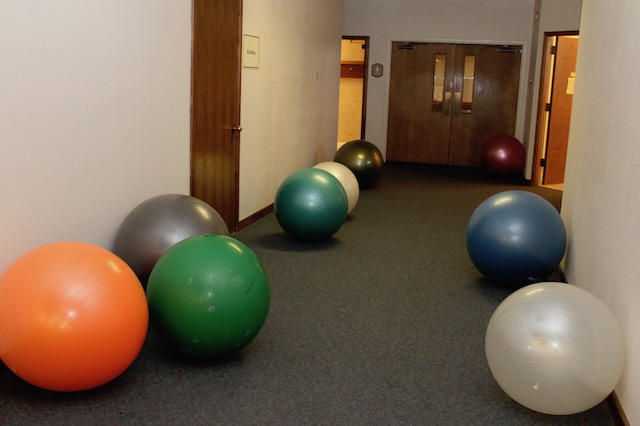
Until then, here are some options:
Latex Free Banner Therapy
Latex Free – GYMNIC – my favorite – had them in my massage studio for 30 years
Other good quality options:
URBNFit
